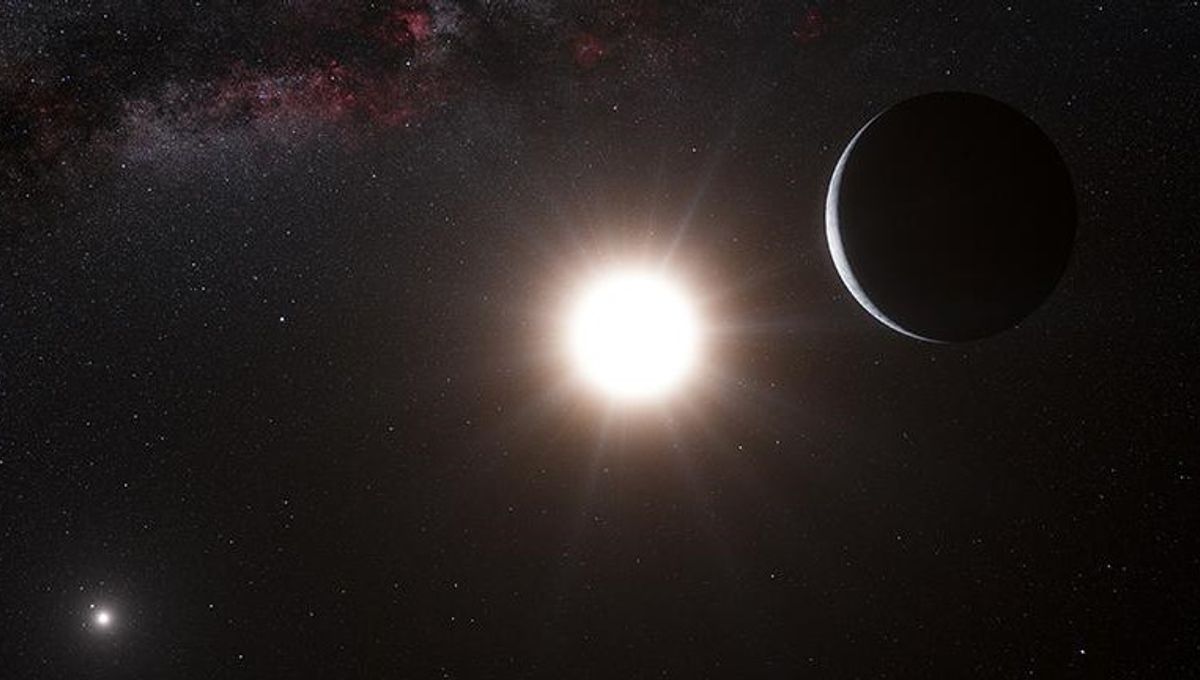
Until not many years ago, scientists didn’t think planets could exist around a pair of stars. The complications from the three-body problem would make most of them unstable. Yet, we’ve found plenty of binary systems with planets. And it seems that they can get weirder and weirder.
The system ʋ Octantis (pronounced nu Octantis) should be hostile to planets. It contains a sub-giant star 57 percent heavier than our Sun and a white dwarf about 43 percent lighter.
The existence of this planet has been controversial.
Professor Man Hoi Lee
A white dwarf is a stellar remnant. It’s the end product of a star like the Sun running out of hydrogen, evolving into a red giant, and then running out of the rest of the fuel. Its core collapses into a dense object and its outer layers are blown away. What remains is a white dwarf. This will happen to the Sun, and we will say goodbye to Mercury, Venus, and maybe even Earth when it does.
You can see why this is not ideal for planetary survival to begin with. So, finding a planet about twice the mass of Jupiter was quite shocking. However, that is not all. The planet is going the wrong way around its star compared to the white dwarf; it is in retrograde, making this an even more peculiar planetary system.
“This planet is retrograde in the sense that the planet goes around the primary star (nu Oct A) in the opposite direction as the two stars go around each other,” Professor Man Hoi Lee, from the University of Hong Kong, told IFLScience.
“The existence of this planet has been controversial, because there were no observational precedents and we expect planets to form in prograde orbit if they form at the same time as the stars.”
The first hint that the system might have a planet came in 2004, with evidence from co-author David Ramm. Using 18 years’ worth of observations, the team was able to confirm the planet’s existence and also consider how the whole system works. They also studied the companion star and confirmed that it was a white dwarf.
Thanks to the data collected, the scientists have estimated that the system formed 2.9 billion years ago. The progenitor of the white dwarf was a lot bigger than the Sun, so it evolved a lot more quickly. They believe that the planet did not form with the stars, but after the white dwarf lost its layers.
“The discovery that the secondary star (nu Oct B) is a white dwarf means that the binary has evolved significantly in terms of the mass of nu Oct B and the orbit of the binary. When nu Oct B evolved into a white dwarf about 2 billion years ago, the planet could have formed in a retrograde disc of material around nu Oct A accreted from the mass ejected by nu Oct B, or it could [have been] captured from a prograde orbit around the binary into a retrograde orbit around nu Oct A,” Professor Lee told IFLScience.
Systems like ʋ Octantis push the envelope of what’s possible in the universe – planets forming billions of years after their stars, from the layers of a dead star and not a protoplanetary disk, and even going the wrong way round.
The study, led by Mr Ho Wan Cheng, is published in the journal Nature.
Source Link: "Improbable" Planet Is Orbiting A Stellar Odd-Couple The Wrong Way Round